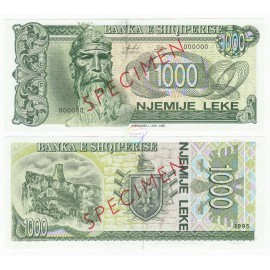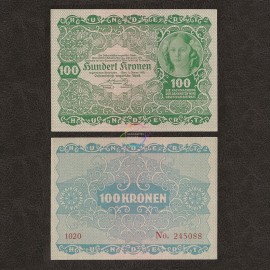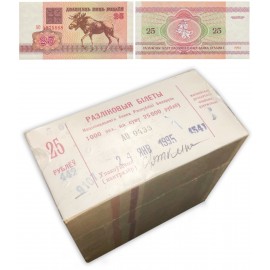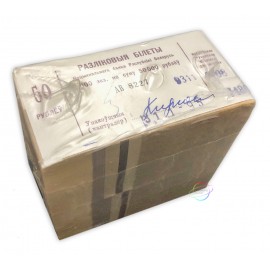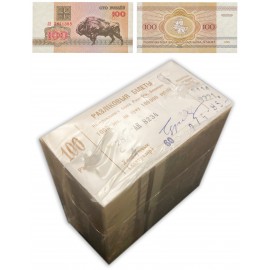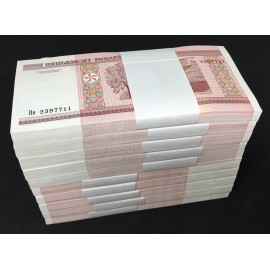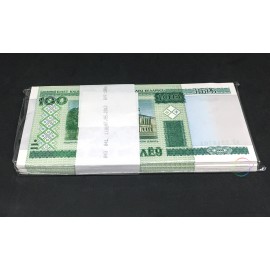Product successfully added to your shopping cart
There are 0 items in your cart. There is 1 item in your cart.
Europe
- Africa
- Angola
- Biafra
- Burundi
- Central African States
- Comoros
- Congo Democratic Republic
- Eritrea
- French West Africa
- Gambia
- Ghana
- Guinea
- Guinea-Bissau
- Kenya
- Lesotho
- Liberia
- Libya
- Madagascar
- Malawi
- Mauritius
- Mozambique
- Nigeria
- Rhodesia
- Rwanda
- Seychelles
- Sierra Leone
- Somalia
- South Africa
- South Sudan
- Saint Thomas & Prince
- Swaziland
- Tanzania
- Tunisia
- Uganda
- West African States
- Zaire
- Zambia
- Zimbabwe
- Asia & Middle East
- Afghanistan
- Bahrain
- Bangladesh
- Brunei
- Burma
- Cambodia
- Ceylon
- China
- Egypt
- French Indo-China
- Hong Kong
- India
- Indonesia
- Iraq
- Japan
- Jordan
- Kazakhstan
- Korea
- Kyrgyzstan
- Laos
- Lebanon
- Malaya
- Malaysia
- Mongolia
- Myanmar
- Nepal
- Oman
- Pakistan
- Philippines
- Singapore
- South Vietnam
- Sri Lanka
- Tajikistan
- Thailand
- Turkmenistan
- Uzbekistan
- Vietnam
- Yemen
- Australia & Oceania
- Europe
- South & Central America
- Sets
- Special
- Wholesale
- Pre-1961
- Other
Filter
Europe
Albania
Albania is a scenic Balkan country in Southeastern Europe, covering about 28,748 square kilometers with a population of approximately 2.8 million. Known for its unspoiled beaches, rugged mountains, ancient ruins, and vibrant culture, Albania offers a unique blend of history, nature, and Mediterranean charm—perfect for adventure and cultural tourism.
Austria
Austria is a landlocked country in Central Europe, covering around 83,879 square kilometers with a population of approximately 9 million. Renowned for its alpine landscapes, historic cities like Vienna and Salzburg, classical music heritage, and world-class skiing, Austria is a top destination for culture, nature, and outdoor adventure.
Belarus
Belarus, located in Eastern Europe, covers a land area of about 207,600 square kilometers and has a population of approximately 9.5 million people. The capital and largest city is Minsk. Belarus is known for its vast forests, picturesque landscapes, and numerous lakes. The country has a rich cultural history influenced by its Slavic roots, as well as Soviet heritage, given its history as part of the Soviet Union until its independence in 1991. The economy is heavily state-controlled, with key industries including manufacturing, agriculture, and energy. Belarus is also noted for its historic sites, including castles, churches, and monuments.
Belgium
Belgium, located in Western Europe, has a land area of about 30,528 square kilometers and a population of around 11.5 million people. The capital city, Brussels, is also the administrative center of the European Union. Belgium is known for its medieval towns, Renaissance architecture, and cultural landmarks such as the Grand Place and Atomium. The country has three official languages—Dutch, French, and German—and is divided into regions with distinct cultural identities. Belgium has a highly developed economy, with industries like manufacturing, technology, and services playing a key role. It's also famous for its chocolates, waffles, and beer.
Bosnia - Herzegovina
Bosnia Herzegovina is a country located in southeastern Europe on the Balkan Peninsula, known for its diverse culture, historic architecture, and scenic landscapes of mountains and rivers. It shares borders with Croatia, Serbia, and Montenegro. The country covers a land area of approximately 51,209 square kilometers (19,772 square miles) and has a population of around 3.2 million people as of 2024. The capital and largest city is Sarajevo, renowned for its multicultural heritage and history as a meeting point of Eastern and Western influences.
Bulgaria
Bulgaria, located in Southeastern Europe, covers a land area of about 110,994 square kilometers and has a population of approximately 7 million people. The capital and largest city is Sofia. Bulgaria is known for its rich cultural heritage, including ancient Thracian, Roman, and Byzantine influences, as well as its folk music, dance, and traditional crafts. The country features diverse landscapes, from the Balkan Mountains to the Black Sea coast. Bulgaria's economy is based on industries such as agriculture, mining, and manufacturing, and it has a growing tourism sector, thanks to its historical sites and natural beauty.
Croatia
Croatia, located in Southeastern Europe along the Adriatic Sea, has a land area of about 56,594 square kilometers and a population of around 4 million people. The capital city is Zagreb. Croatia is known for its stunning coastline, which includes over 1,000 islands, and its rich cultural and historical heritage, with ancient Roman ruins, medieval towns, and Renaissance architecture. The country is also famous for its natural beauty, including national parks like Plitvice Lakes. Croatia’s economy is driven by tourism, agriculture, and manufacturing, and it became a member of the European Union in 2013.
Czechoslovakia
Czechoslovakia was a country in Central Europe that existed from 1918 until its peaceful dissolution in 1992. It covered an area of about 78,866 square kilometers and had a population of around 15 million people at the time of its breakup. The country was formed after World War I from parts of the Austro-Hungarian Empire, comprising what are now the Czech Republic and Slovakia. The capital city was Prague. Czechoslovakia played a significant role in European history, with periods of democracy and communist rule during the 20th century. In 1993, Czechoslovakia split into two independent nations: the Czech Republic and Slovakia.
European Union
The European Union (EU) is a political and economic union of 27 European countries, established to foster economic cooperation, political stability, and social integration. The EU covers an area of approximately 4.5 million square kilometers and has a population of around 450 million people. It was founded to promote peace and prosperity in Europe after World War II, starting with the European Coal and Steel Community in 1951 and evolving into the EU with the Maastricht Treaty in 1993. The EU has its own currency, the euro, used by 19 of the member states. It focuses on areas like trade, environmental policy, human rights, and security. Brussels, Belgium, serves as the administrative capital, where major EU institutions are based. The EU is one of the largest economies in the world and plays a key role in international diplomacy.
Finland
Finland, located in Northern Europe, has a land area of about 338,440 square kilometers and a population of around 5.5 million people. The capital city is Helsinki. Known for its stunning natural landscapes, Finland is often referred to as the "Land of a Thousand Lakes," with over 188,000 lakes and vast forests. Finland is famous for its high quality of life, excellent education system, and strong social welfare programs. The country has a rich cultural heritage, including traditions like sauna and unique folk music. Finland is also known for its winter sports, and it consistently ranks high in global happiness and safety indices. The economy is diverse, with key sectors including technology, manufacturing, and services.
France
France, located in Western Europe, covers 551,695 square kilometers and has a population of around 67 million people. Its capital, Paris, is known for its art, fashion, and landmarks like the Eiffel Tower and the Louvre. France is famous for its rich history, diverse landscapes, and cultural contributions, including cuisine, wine, and luxury goods. The economy is strong, with key sectors like manufacturing, agriculture, and tourism.
Germany
Germany, located in Central Europe, covers a land area of about 357,022 square kilometers and has a population of around 83 million people. The capital city is Berlin. Known for its rich history, Germany is home to influential cultural, philosophical, and scientific traditions. The country features diverse landscapes, from the Alps in the south to the North Sea coast in the north. Germany has a highly developed economy, driven by industries such as automotive manufacturing, engineering, and technology. It is also known for its strong political and economic role within the European Union.
Great Britain
Great Britain is an island in the North Atlantic, consisting of three countries: England, Scotland, and Wales. It has a land area of approximately 209,331 square kilometers and a population of around 67 million people. The capital of Great Britain is London, which is also the capital of England and the United Kingdom. Known for its rich history, Great Britain has played a key role in world events, from the British Empire to industrialization. The island is renowned for its cultural heritage, including literature, music, and iconic landmarks such as Buckingham Palace and Edinburgh Castle. The economy is diverse, with major sectors like finance, technology, and manufacturing.
Greece
Greece is a country located in southeastern Europe, known for its rich history, ancient ruins, and beautiful Mediterranean coastline. It is often considered the cradle of Western civilization and democracy, with historic landmarks such as the Acropolis in Athens and the ancient city of Delphi. Greece covers a land area of approximately 131,957 square kilometers (50,949 square miles) and has a population of around 10.3 million people as of 2024. The country consists of a mainland and numerous islands, including Crete, Rhodes, and the Cyclades, each offering unique cultural and natural attractions. The capital and largest city is Athens, a vibrant metropolis blending ancient heritage with modern life.
Iceland
Iceland is a Nordic island nation located in the North Atlantic Ocean, known for its dramatic landscapes of volcanoes, geysers, glaciers, and hot springs. It is one of the most geologically active places on Earth and a popular destination for nature lovers and adventure seekers. Iceland covers a land area of approximately 103,000 square kilometers (39,768 square miles) and has a population of around 380,000 people as of 2024. The capital and largest city is Reykjavík, which is also the northernmost capital of a sovereign state in the world.
Italy
Italy is a country in southern Europe, known for its rich history, art, cuisine, and scenic landscapes. Shaped like a boot, it includes the mainland as well as the islands of Sicily and Sardinia. Italy covers a land area of approximately 301,340 square kilometers (116,350 square miles) and has a population of around 58.9 million people as of 2024. The capital city is Rome, famous for its ancient landmarks such as the Colosseum and the Vatican City, the center of the Roman Catholic Church.
Lithuania
Lithuania, located in the Baltic region of Northern Europe, covers a land area of about 65,300 square kilometers and has a population of approximately 2.7 million people. The capital city is Vilnius. Lithuania has a rich history, once being part of the Grand Duchy of Lithuania, one of the largest and most powerful countries in Europe during the Middle Ages. It is known for its beautiful landscapes, including forests, lakes, and the Curonian Spit, a UNESCO World Heritage site. Lithuania is a member of the European Union and NATO, with a growing economy driven by industries such as manufacturing, services, and technology. The country has a strong cultural heritage, particularly in music, art, and literature.
Luxembourg
Luxembourg, a small landlocked country in Western Europe, covers an area of about 2,586 square kilometers and has a population of around 640,000 people. The capital city is Luxembourg City, which is also the financial and administrative center of the country. Known for its high standard of living and strong economy, Luxembourg is one of the wealthiest countries in the world, with a major focus on banking, finance, and technology. It is a founding member of the European Union, NATO, and the United Nations.
Macedonia
North Macedonia is a landlocked country in the Balkan Peninsula in southeastern Europe, known for its mountainous terrain, lakes, and historical sites dating back to ancient times. It shares borders with Kosovo, Serbia, Bulgaria, Greece, and Albania. The country covers a land area of approximately 25,713 square kilometers (9,928 square miles) and has a population of around 2.1 million people as of 2024. The capital and largest city is Skopje, a cultural and political hub with a mix of Ottoman, Byzantine, and modern influences.
Moldova
Moldova is a landlocked country in Eastern Europe, bordered by Romania to the west and Ukraine to the north, east, and south. Known for its rolling hills, vineyards, and rich cultural heritage, Moldova has a strong tradition of wine-making and folk art. It covers a land area of approximately 33,846 square kilometers (13,068 square miles) and has a population of around 2.5 million people as of 2024. The capital and largest city is Chișinău, which serves as the political, economic, and cultural center of the country.
Northern Ireland
Northern Ireland is a constituent country of the United Kingdom, located on the island of Ireland. It covers an area of about 14,130 square kilometers and has a population of around 1.9 million people. The capital and largest city is Belfast. Northern Ireland has a complex political history, particularly regarding its relationship with the Republic of Ireland and issues related to unionism and nationalism, which led to decades of conflict known as "The Troubles." Today, Northern Ireland is known for its scenic landscapes, including the Mourne Mountains and the Giant’s Causeway, as well as its vibrant cultural heritage, with a rich tradition in music, literature, and art. Its economy is driven by industries such as manufacturing, services, and agriculture.
Portugal
Portugal, located in Southern Europe, covers a land area of about 92,090 square kilometers and has a population of around 10 million people. The capital city is Lisbon. Known for its rich history, Portugal was a major maritime power during the Age of Exploration, establishing colonies in Africa, Asia, and South America. The country features diverse landscapes, from the sandy beaches of the Algarve to the lush mountains of the north. Portugal is renowned for its wine, particularly port wine, as well as its cuisine, including seafood dishes like bacalhau. The economy is based on tourism, agriculture, and manufacturing, and the country is a member of the European Union.
Scotland
Scotland, located to the north of England, covers a land area of about 77,910 square kilometers and has a population of around 5.5 million people. The capital city is Edinburgh, while the largest city is Glasgow. Known for its rugged highlands, scenic lochs, and historic castles, Scotland has a rich cultural heritage that includes traditional music, dance (such as the Highland Games), and iconic symbols like the bagpipes and kilts. Scotland is famous for its whisky production and its contributions to literature, philosophy, and science. It is part of the United Kingdom and has its own devolved government with powers over areas like education and health.
Serbia
Serbia, located in Southeastern Europe, covers a land area of about 77,474 square kilometers and has a population of approximately 7 million people. The capital city is Belgrade. Serbia has a rich history that includes being part of the former Yugoslavia, and it is known for its medieval monasteries, vibrant cultural traditions, and historical landmarks.
Slovenia
Slovenia, located in Central Europe, covers a land area of about 20,273 square kilometers and has a population of around 2.1 million people. The capital and largest city is Ljubljana. Known for its beautiful landscapes, Slovenia features mountains, lakes, forests, and a small stretch of coastline along the Adriatic Sea.
Transnistria
Transnistria is a self-declared, unrecognized breakaway region located along the Dniester River, between Moldova and Ukraine. It covers a land area of about 4,163 square kilometers and has a population of around 500,000 people. The capital city is Tiraspol. Transnistria declared independence from Moldova in 1990, but it has not been recognized by any country, including Russia, despite receiving significant political, economic, and military support from Russia.
Turkey
Turkey, located at the crossroads of Europe and Asia, covers a land area of about 783,356 square kilometers and has a population of approximately 85 million people. The capital city is Ankara, while Istanbul is the largest city and a major cultural and economic hub. Turkey is known for its rich history, which includes the Byzantine and Ottoman empires, and is home to iconic landmarks such as the Hagia Sophia and the ancient city of Troy.
Ukraine
Ukraine, located in Eastern Europe, covers a land area of about 603,550 square kilometers, making it the largest country entirely in Europe. It has a population of around 36 million people. The capital and largest city is Kyiv.
Yugoslavia
Yugoslavia was a country in Southeast Europe that existed in various forms throughout the 20th century. At its largest, it covered about 255,804 square kilometers and had a population of over 23 million people. Formed after World War I in 1918 as the Kingdom of Serbs, Croats, and Slovenes, it was later renamed Yugoslavia. After World War II, it became a socialist federation made up of six republics: Bosnia and Herzegovina, Croatia, Macedonia, Montenegro, Serbia, and Slovenia.
Belarus 500 Rubles X 10 PCS, 2000 (2011), P-27b, UNC
The Belarus 500 Rubles banknote, first issued in 2000, features the Republican Trade Unions Palace of Culture in Minsk on the front and architectural sculptures from the same building on the back. Measuring 150 x 74 mm, the note is printed on paper and includes security features like a watermark of the palace and an embedded security thread.$5.99In StockBelarus 500 Rubles X 100 PCS, Full Bundle, 2000 (2011), P-27b, UNC
The Belarus 500 Rubles banknote, first issued in 2000, features the Republican Trade Unions Palace of Culture in Minsk on the front and architectural sculptures from the same building on the back. Measuring 150 x 74 mm, the note is printed on paper and includes security features like a watermark of the palace and an embedded security thread.$48.99In StockBelarus 500 Rubles X 1000 PCS, Brick, 2000 (2011), P-27b, UNC
The Belarus 500 Rubles banknote, first issued in 2000, features the Republican Trade Unions Palace of Culture in Minsk on the front and architectural sculptures from the same building on the back. Measuring 150 x 74 mm, the note is printed on paper and includes security features like a watermark of the palace and an embedded security thread.$399.99In StockBelarus 1000 Rubles X 100 PCS, Full Bundle, 2000 (2011), P-28b, UNC
The Belarus 1,000 Rubles banknote, issued in 2000, features the National Art Museum of Belarus in Minsk on the front and a still-life painting by Ivan Khrutski on the back. Measuring 150 x 74 mm, it includes security features like a watermark of a flower bouquet and an embedded security thread with the text "НБРБ."$229.99In StockBelarus 1000 Rubles X 1000 PCS, Brick, 2000 (2011), P-28b, UNC
The Belarus 1,000 Rubles banknote, issued in 2000, features the National Art Museum of Belarus in Minsk on the front and a still-life painting by Ivan Khrutski on the back. Measuring 150 x 74 mm, it includes security features like a watermark of a flower bouquet and an embedded security thread with the text "НБРБ."$1,999.00In Stock
































